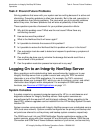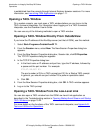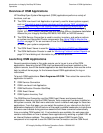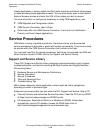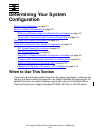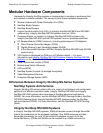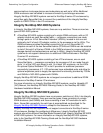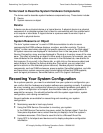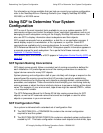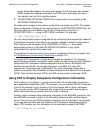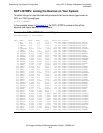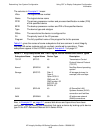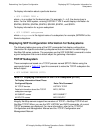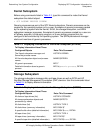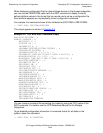Determining Your System Configuration
HP Integrity NonStop NS-Series Operations Guide—529869-005
2-4
Terms Used to Describe System Hardware
Components
Terms Used to Describe System Hardware Components
The terms used to describe system hardware components vary. These terms include:
•
Device
•
System resource or object
Device
A device can be a physical device or a logical device. A physical device is a physical
component of a computer system that is used to communicate with the outside world
or to acquire or store data. A logical device is a process used to conduct input or
output with a physical device.
System Resource or Object
The term “system resource” is used in OSM documentation to refer to server
components that OSM software displays, monitors, and often controls. The term
“object” is often used when referring to a specific resource, such as “the Disk object.”
All system resources are displayed in hierarchical form in the tree pane of the OSM
Service Connection; many are also displayed in Physical or Inventory views of the view
pane. The effect of selecting an object in either pane is the same: for example, you can
view attributes for the selected system resource in the Attributes tab, view alarms for
that resource (if any exist) in the Alarms tab, or right-click on the resource object and
select Actions, to display the Actions dialog box (from which you can select and
perform actions on the selected system resource). Besides physical hardware
components, such as IOAM enclosures, power supplies, ServerNet adapters, and disk
and tape drives, system resources also include logical entities that OSM supports,
such as logical processors, ServerNet fabrics, and LIFs (logical interfaces).
Recording Your System Configuration
As a system operator, you need to understand how your system is configured so you
can confirm that the hardware and system software are operating normally. If problems
do occur, knowing your configuration allows you to pinpoint problems more easily. If
your system configuration is corrupted, documentation about your configuration is
essential for recovery. You should be familiar with the system organization, system
configuration, and naming conventions.
Several methods are available for researching and recording your system
configuration:
•
Maintaining records in hard-copy format
•
Using the OSM Service Connection to inventory your system
In the OSM Service Connection tree pane, select the System object. From the
View pane drop-down menu, select Inventory to display a list of the system’s
hardware resources. Click Save to save this list to a Microsoft Excel file.
•
Using SCF to list objects and devices and to display subsystem configuration
information




